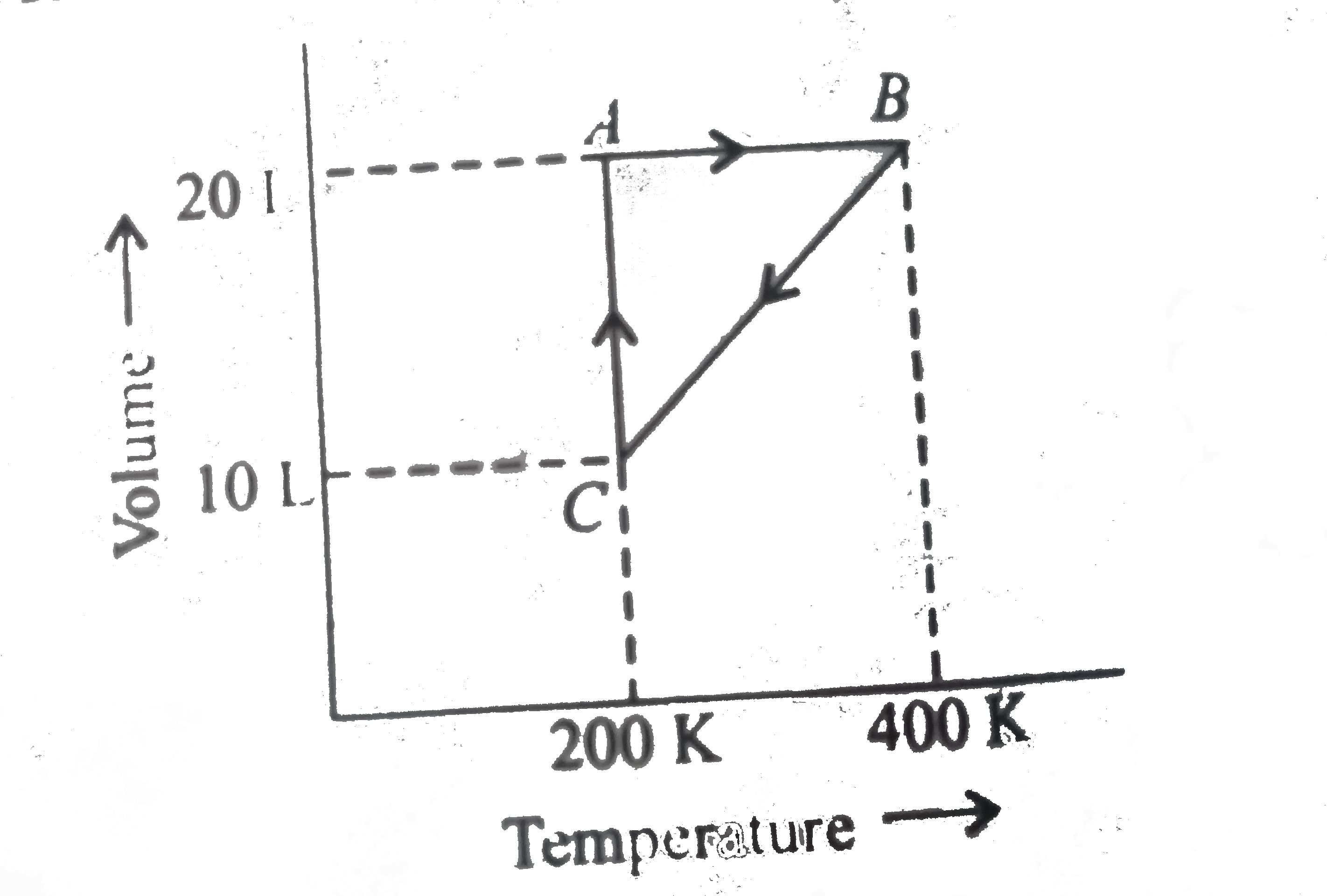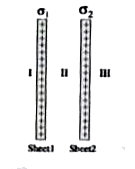Electrical conductivies of Ge and Na are σ1 and σ2 respectively. If these substances are heard, then
σ1 decreases and σ2 increases
both σ1 and σ2 decreases
both σ1 and σ2 increases
σ1 increases and σ2 decreases
The correct Answer is:D
To solve the question regarding the electrical conductivities of germanium (Ge) and sodium (Na) when heated, we can follow these steps:
Step 1: Understand the materials
- Germanium (Ge) is a semiconductor, while sodium (Na) is a metal and a good conductor of electricity.
Step 2: Analyze the behavior of conductivities with temperature
- For semiconductors like germanium, the electrical conductivity (σ₁) increases with an increase in temperature. This is because, at higher temperatures, more charge carriers (electrons and holes) are generated, which enhances conductivity.
- For metals like sodium, the electrical conductivity (σ₂) generally decreases with an increase in temperature. This is due to increased lattice vibrations at higher temperatures, which scatter the electrons and reduce their mobility, leading to lower conductivity.
Step 3: Compare the effects of heating on both materials
- When heated:
- σ₁ (for germanium) increases.
- σ₂ (for sodium) decreases.
Step 4: Conclusion
- Based on the behavior of electrical conductivities with temperature, we can conclude that:
- The conductivity of germanium increases while the conductivity of sodium decreases when both are heated.
Final Answer
The correct option is D, which states that the conductivity of germanium increases while that of sodium decreases with an increase in temperature.
---
- Germanium (Ge) is a semiconductor, while sodium (Na) is a metal and a good conductor of electricity.
- For semiconductors like germanium, the electrical conductivity (σ₁) increases with an increase in temperature. This is because, at higher temperatures, more charge carriers (electrons and holes) are generated, which enhances conductivity.
- For metals like sodium, the electrical conductivity (σ₂) generally decreases with an increase in temperature. This is due to increased lattice vibrations at higher temperatures, which scatter the electrons and reduce their mobility, leading to lower conductivity.
- When heated:
- σ₁ (for germanium) increases.
- σ₂ (for sodium) decreases.
- Based on the behavior of electrical conductivities with temperature, we can conclude that:
- The conductivity of germanium increases while the conductivity of sodium decreases when both are heated.
The correct option is D, which states that the conductivity of germanium increases while that of sodium decreases with an increase in temperature.
Topper's Solved these Questions
- SEMICONDUCTORSBOOK - ALLENCHAPTER - SEMICONDUCTORSEXERCISE - Part-3(Exercise-3)
27 Videos
- SEMICONDUCTORSBOOK - ALLENCHAPTER - SEMICONDUCTORSEXERCISE - Part-3(Exercise-4)
51 Videos
- SEMICONDUCTORSBOOK - ALLENCHAPTER - SEMICONDUCTORSEXERCISE - Part-3(Exercise-1)
84 Videos
- PHYSICAL WORLD, UNITS AND DIMENSIONS & ERRORS IN MEASUREMENT BOOK - ALLENCHAPTER - PHYSICAL WORLD, UNITS AND DIMENSIONS & ERRORS IN MEASUREMENT EXERCISE - EXERCISE-IV
8 Videos
- WAVES AND OSCILLATIONSBOOK - ALLENCHAPTER - WAVES AND OSCILLATIONSEXERCISE - Part-1(Exercise-05)[B]
42 Videos
Similar Questions
Two metal wires of identical dimesnios are connected in series. If σ1 and σ2 are the conducties of the metal wires respectively, the effective conductivity of the combination is
View SolutionTwo spherical conductors of radii 4cmand5cm are charged to the same potential. If σ1andσ2 be respective value of surface density of charge on both the conductors, then the ratio of σ1/σ2 will be
View Solution
Knowledge Check
Two metal wires of identical dimesnios are connected in series. If σ1 and σ2 are the conducties of the metal wires respectively, the effective conductivity of the combination is
Aσ1+σ2Bσ1+σ22C√σ1+σ2D2σ1+σ2σ1+σ2
Two spheres of radii 2 cm and 3 cm are charged to the same potential. If σ and σ2 be respectively the values of surface charge density on the conductors, then the ratio σ1σ2 will be
View SolutionTwo infinitely large sheets having charge densities σ1andσ2 respectively (σ1>σ2) are placed near each other separated by distance 'd'. A small charge 'q' is placed in between two plates such that there is no effect on charge distribution on plates. Now this charge is moved at an angle of 45∘ with the horizontal towards plate having charge density σ2 by distance 'a' (a<<d). Find the work done by electric field in the process.
View Solutionthe given figure shows two parallel plates A and B of change densities +3σ and −3σrespectively. electric intensity will be zero in the

View SolutionCoefficients of variation of two distribution are 15 and 20 and their means are 20 and 10 respectively. If their standard deviations are σ1 and σ2 then
View Solution
The pressures at A and B in the atmosphere are, respectively,
View SolutionTwo paralle plane sheets 1 and 2 carry uniform charge densites σ1andσ2 (see fig. The electric field in the region marked I is (σ1>σ2):

View SolutionTwo unequal blocks placed over each other of densities σ1 and σ2 are immersed in a fluid of density of σ. The block of density σ1 is fully submerged so that ratio of their masses is 12 and σ/σ1=2 and σ/σ2=0.5. Find the degree of submergence of the upper block of density σ2.
View Solution
